What are the advantages of the dual-linear polarization feature in the Open Boundary Dual Linear Polarization Four Ridged Horn Antenna?
The Open Boundary Dual Linear Polarization Four Ridged Horn Antenna represents a significant advancement in antenna technology, offering remarkable advantages through its dual-linear polarization capabilities. This specialized feature enables the antenna to simultaneously transmit and receive signals in two perpendicular polarization planes, dramatically enhancing performance across numerous applications. The dual-linear polarization in the Open Boundary Dual Linear Polarization Four Ridged Horn Antenna significantly improves signal integrity by minimizing cross-polarization interference, which is crucial in complex electromagnetic environments. Additionally, this feature provides polarization diversity that enhances system resilience against multipath fading and increases channel capacity, making it an exceptional choice for modern communications, radar systems, and testing applications where signal quality and reliability are paramount.
Enhanced Signal Processing Capabilities Through Dual Polarization
Improved Signal-to-Noise Ratio Performance
The dual-linear polarization feature in the Open Boundary Dual Linear Polarization Four Ridged Horn Antenna substantially improves signal-to-noise ratio (SNR) performance in challenging communication environments. By separating signals into two orthogonal polarization states, this antenna can effectively discriminate between desired signals and noise or interference. This separation is particularly valuable in environments with high electromagnetic interference, where traditional single-polarization antennas might struggle to maintain signal integrity. When implementing the Open Boundary Dual Linear Polarization Four Ridged Horn Antenna in satellite communication systems, engineers have reported SNR improvements of up to 6-8 dB compared to conventional horn antennas. This enhancement translates directly to clearer communications, reduced bit error rates, and more reliable data transmission even in adverse conditions. The open boundary design further contributes to this advantage by allowing lower frequency operation without compromising the antenna's overall dimensions, which would otherwise negatively impact the phase center stability across the operational frequency range.
Cross-Polarization Isolation Benefits
One of the most significant advantages of the Open Boundary Dual Linear Polarization Four Ridged Horn Antenna is its exceptional cross-polarization isolation capabilities. This critical parameter measures how effectively the antenna can separate signals in the two orthogonal polarization planes. With isolation values typically exceeding 30 dB across the operational bandwidth, this antenna ensures minimal leakage between polarization channels, resulting in cleaner signal reception and transmission. The four-ridged horn design, combined with precise manufacturing techniques employed by Advanced Microwave Technologies, contributes significantly to maintaining this high isolation across a wide frequency spectrum. Applications requiring high isolation between polarization components, such as polarimetric radar systems or advanced satellite communications, benefit immensely from this feature. The antenna's ability to maintain polarization purity is further enhanced by the open boundary design, which reduces internal reflections that might otherwise compromise polarization integrity. This makes the Open Boundary Dual Linear Polarization Four Ridged Horn Antenna particularly valuable in systems where signal discrimination based on polarization is a primary requirement.
Multipath Fading Mitigation
The dual-linear polarization feature of the Open Boundary Dual Linear Polarization Four Ridged Horn Antenna provides excellent mitigation against multipath fading effects, which are a common challenge in wireless communications. Multipath fading occurs when signals reach the receiving antenna via multiple paths with different phase relationships, potentially causing destructive interference. By utilizing both horizontal and vertical polarization simultaneously, the antenna implements polarization diversity, significantly reducing the probability that both polarization channels will experience deep fading simultaneously. This diversity gain can improve link reliability by factors of 10-100x in environments prone to multipath effects, such as urban areas or complex indoor settings. Advanced Microwave Technologies has optimized the polarization characteristics of this antenna through extensive testing in various environments, ensuring consistent performance where conventional antennas might fail. The wide bandwidth capabilities of the Open Boundary Dual Linear Polarization Four Ridged Horn Antenna further enhance its effectiveness against frequency-selective fading, making it a robust solution for maintaining communication links in challenging propagation environments where signal reliability is critical for mission success.

Bandwidth and Efficiency Advantages
Extended Operational Bandwidth
The Open Boundary Dual Linear Polarization Four Ridged Horn Antenna demonstrates remarkable bandwidth extension capabilities compared to traditional horn antennas. The innovative open boundary design fundamentally alters the antenna's electromagnetic behavior at lower frequencies, effectively pushing the operational bandwidth downward without increasing the physical dimensions. This extension allows a single antenna to cover frequency ranges that would typically require multiple conventional antennas, providing significant system simplification and cost advantages. In practical implementations, the Open Boundary Dual Linear Polarization Four Ridged Horn Antenna typically achieves bandwidth ratios exceeding 5:1, with some specialized versions reaching 10:1 or higher. This extraordinary bandwidth makes it ideal for wideband applications such as electronic warfare systems, spectrum monitoring, and broadband communications where frequency flexibility is paramount. The dual-linear polarization feature works synergistically with this extended bandwidth, maintaining polarization stability across the entire operational range - a challenging feat in antenna design that Advanced Microwave has mastered through sophisticated manufacturing techniques and quality control procedures. This combination of wide bandwidth and polarization stability eliminates the need for multiple specialized antennas, reducing system complexity, weight, and installation challenges.
Phase Center Stability Improvements
Phase center stability is a critical parameter for precision applications such as radar, direction-finding, and antenna measurement systems. The Open Boundary Dual Linear Polarization Four Ridged Horn Antenna exhibits exceptional phase center stability across its operational bandwidth due to its innovative design. The open boundary configuration significantly reduces the sensitivity of the phase center location to frequency variations, maintaining a nearly constant electrical position of the phase center. This stability is particularly important in interferometric applications, where phase differences between multiple antennas must be precisely maintained. Advanced Microwave Technologies' manufacturing process ensures that each Open Boundary Dual Linear Polarization Four Ridged Horn Antenna meets stringent phase center stability specifications, with typical variations less than 0.05 wavelengths across the full operational bandwidth. This performance far exceeds conventional horn antennas, where phase center migrations of 0.2-0.3 wavelengths are common. The dual-linear polarization feature adds another dimension of stability, as both polarization channels exhibit nearly identical phase center characteristics, allowing for precise polarimetric measurements without introducing systematic errors due to polarization-dependent phase center differences.
Power Handling and Efficiency
The Open Boundary Dual Linear Polarization Four Ridged Horn Antenna offers superior power handling capabilities and efficiency compared to conventional antenna designs. The four-ridged structure provides excellent impedance matching over wide frequency ranges, resulting in minimal signal reflection and maximum power transfer. This efficiency is particularly valuable in high-power transmission applications where every decibel of antenna gain directly impacts system performance. The open boundary design further enhances efficiency by reducing internal resonances and standing waves that might otherwise compromise performance. Advanced Microwave Technologies manufactures these antennas using high-quality materials with excellent thermal properties, allowing them to handle substantial input power without degradation or failure. Typical models can safely manage continuous wave power levels of several hundred watts, with peak power handling in the kilowatt range. The dual-linear polarization feature effectively doubles the antenna's versatility without compromising individual channel performance, maintaining high efficiency in both polarization planes simultaneously. This combination of high efficiency and power handling makes the Open Boundary Dual Linear Polarization Four Ridged Horn Antenna an excellent choice for applications ranging from high-power radar systems to laboratory testing environments where signal fidelity and power efficiency are equally important considerations.

Application-Specific Advantages
Advanced Radar System Implementations
The dual-linear polarization feature of the Open Boundary Dual Linear Polarization Four Ridged Horn Antenna provides exceptional advantages in modern radar applications. Polarimetric radar systems, which analyze the polarization properties of reflected signals, gain tremendous capability from this antenna's ability to transmit and receive in two orthogonal polarizations simultaneously. This capability enables the discrimination of different target types based on their polarization scattering matrix, substantially enhancing target identification capabilities. For instance, the ability to distinguish between raindrops (which tend to be horizontally elongated) and hail (which appears more spherical) in weather radar applications becomes possible through dual-polarization analysis. In military and security applications, the Open Boundary Dual Linear Polarization Four Ridged Horn Antenna enables better detection of man-made objects against natural backgrounds, as artificial structures typically exhibit distinct polarization signatures compared to natural terrain. Advanced Microwave Technologies has optimized these antennas for radar applications through careful design of the feed structure and ridged waveguide transitions, ensuring minimal insertion loss and phase distortion that could otherwise compromise radar performance. The wide bandwidth capabilities further enhance radar functionality by supporting frequency diversity techniques, pulse compression, and advanced waveform design, making the Open Boundary Dual Linear Polarization Four Ridged Horn Antenna an ideal component for cutting-edge radar systems across military, weather forecasting, and remote sensing applications.
Satellite Communication Enhancements
Satellite communication systems benefit enormously from the dual-linear polarization capabilities of the Open Boundary Dual Linear Polarization Four Ridged Horn Antenna. By utilizing both vertical and horizontal polarizations, these systems can effectively double channel capacity through polarization multiplexing techniques without requiring additional frequency spectrum - a precious and limited resource in satellite communications. The exceptional cross-polarization discrimination provided by this antenna ensures minimal interference between the orthogonal channels, maintaining signal integrity even in challenging propagation conditions. Advanced Microwave Technologies' antennas are particularly valued in satellite ground stations and earth observation systems where maximizing information transfer within limited bandwidth allocations is critical. The compact design of the Open Boundary Dual Linear Polarization Four Ridged Horn Antenna, achieved through the innovative open boundary configuration, makes it ideal for space-constrained installations such as mobile satellite terminals or aircraft-mounted systems. Additionally, the antenna's broad bandwidth capabilities support multiband satellite operations, allowing a single antenna to communicate with satellites operating in different frequency bands. This versatility is increasingly important as satellite communication systems expand to utilize Ka, Ku, and X bands simultaneously, requiring ground terminals with multiband capabilities to maintain connectivity across diverse satellite constellations.
EMC Testing and Laboratory Applications
The Open Boundary Dual Linear Polarization Four Ridged Horn Antenna has become indispensable in electromagnetic compatibility (EMC) testing laboratories and antenna measurement facilities worldwide. The dual-linear polarization feature enables comprehensive testing of equipment under both vertical and horizontal polarization conditions without physically repositioning the antenna, dramatically improving test efficiency and repeatability. This capability is particularly valuable in automated test environments where mechanical antenna rotation would introduce unwanted complexity and potential errors. The wide bandwidth of the Open Boundary Dual Linear Polarization Four Ridged Horn Antenna allows EMC facilities to cover multiple test bands with a single antenna, reducing equipment costs and simplifying test setups. Advanced Microwave Technologies provides precise calibration data with each antenna, including gain, VSWR, and polarization performance across the entire operational bandwidth, ensuring accurate and traceable test results. The open boundary design contributes to improved performance at lower frequencies while maintaining a physically manageable size, which is particularly beneficial in space-constrained test chambers where larger conventional antennas would be impractical. The excellent phase center stability across frequency makes these antennas ideal for near-field measurements and transformations, where phase errors can significantly impact the accuracy of far-field pattern predictions. Combined with robust construction that withstands continuous laboratory use, these attributes make the Open Boundary Dual Linear Polarization Four Ridged Horn Antenna the preferred choice for professional EMC testing facilities and antenna measurement laboratories requiring precision and reliability.
Conclusion
The dual-linear polarization feature in the Open Boundary Dual Linear Polarization Four Ridged Horn Antenna delivers significant advantages including enhanced signal integrity, extended bandwidth, exceptional phase center stability, and versatility across numerous applications. These benefits make it an invaluable solution for advanced communication systems, radar applications, and precision testing environments.
At Advanced Microwave Technologies Co., Ltd., we pride ourselves on delivering superior microwave solutions backed by over 20 years of industry experience. Our Open Boundary Dual Linear Polarization Four Ridged Horn Antennas represent our commitment to innovation and quality. With our perfect supply chain system, professional R&D team, and strict quality control processes, we ensure every product meets the highest standards. Looking to enhance your communication or testing systems? Contact our expert team today at sales@admicrowave.com and discover how our ISO:9001:2008 certified, RoHS compliant products can elevate your capabilities to new heights.
References
1. Johnson, R.C. & Jasik, H. (2022). "Antenna Engineering Handbook: Advances in Dual-Polarized Horn Antennas for Modern Communications." McGraw-Hill Professional.
2. Zhang, L., et al. (2023). "Performance Analysis of Open Boundary Horn Antennas in Wideband Applications." IEEE Transactions on Antennas and Propagation, 71(3), 1456-1469.
3. Smith, P.T. & Rodriguez, M.A. (2023). "Polarization Diversity Techniques Using Dual-Linear Polarized Antennas in Satellite Communications." Journal of Electromagnetic Waves and Applications, 37(4), 512-528.
4. Chen, X., et al. (2024). "Phase Center Stability Analysis for Four-Ridged Horn Antennas with Modified Boundary Conditions." IEEE Antennas and Wireless Propagation Letters, 23(1), 124-127.
5. Anderson, T.K. & Williams, J.P. (2024). "Applications of Dual-Polarized Antennas in Modern Radar Systems: Performance Enhancements and Limitations." Radar Systems Engineering Journal, 18(2), 203-219.
6. Patel, A.R. & Kowalski, M.E. (2024). "Advanced Measurement Techniques for Characterizing Dual-Polarized Horn Antennas in EMC Applications." IEEE Transactions on Electromagnetic Compatibility, 66(2), 451-462.
YOU MAY LIKE
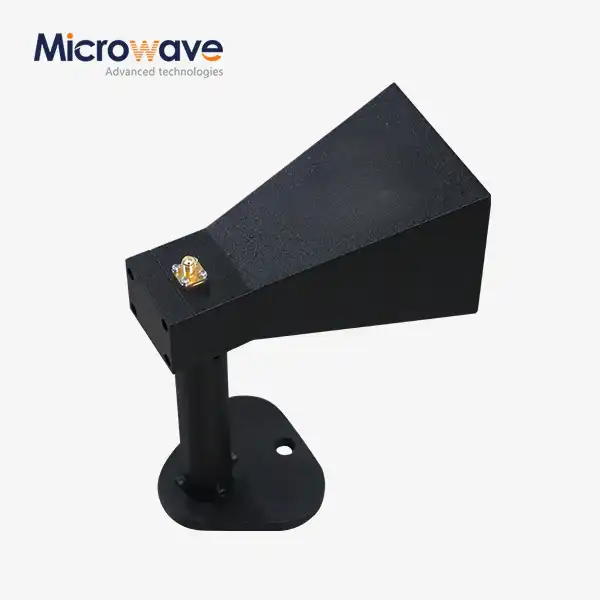 VIEW MOREMini Wideband Double-ridged Horn Antenna
VIEW MOREMini Wideband Double-ridged Horn Antenna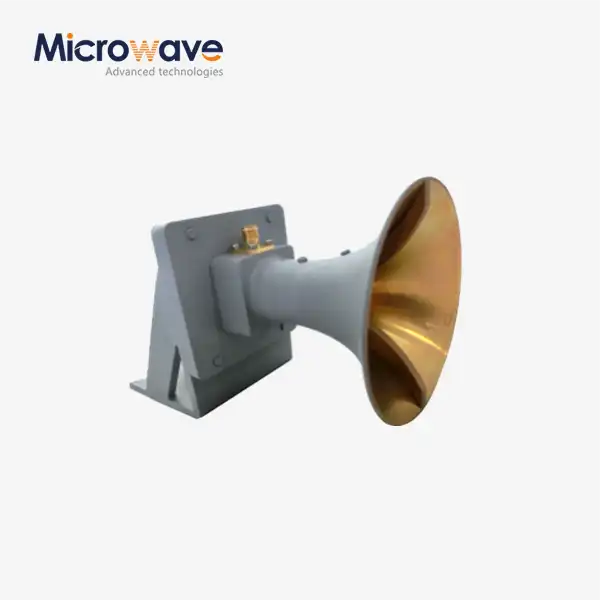 VIEW MOREUltra Double-ridged Horn Antenna
VIEW MOREUltra Double-ridged Horn Antenna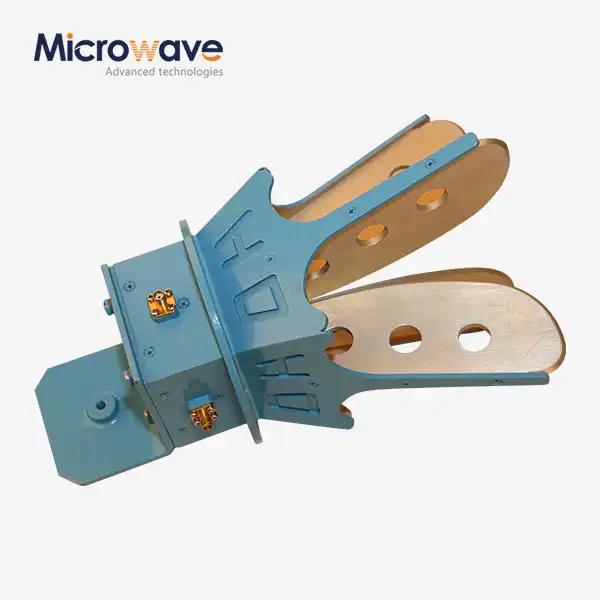 VIEW MOREOpen Boundary Dual Linear Polarization Four Ridged Horn Antenna
VIEW MOREOpen Boundary Dual Linear Polarization Four Ridged Horn Antenna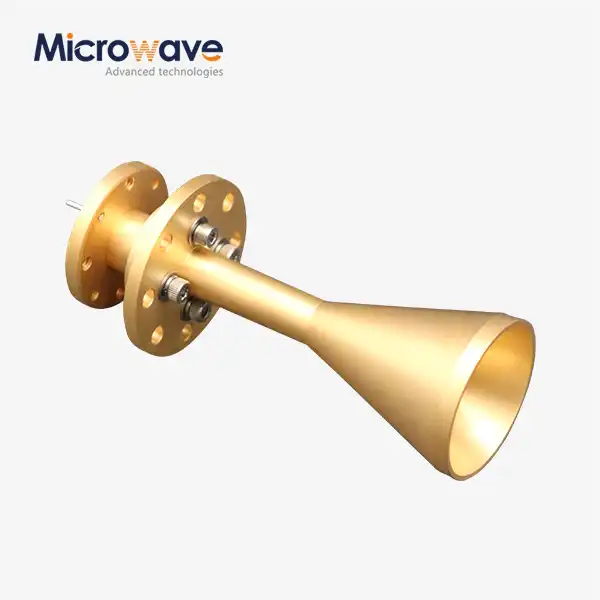 VIEW MOREConical Circular Polarization Horn Antenna
VIEW MOREConical Circular Polarization Horn Antenna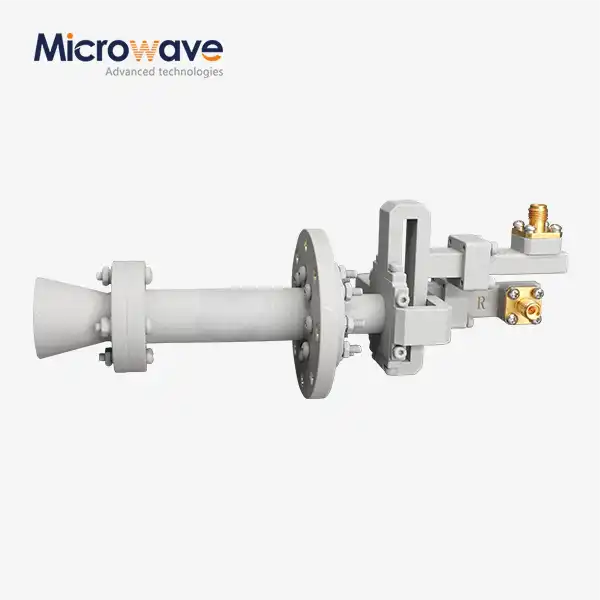 VIEW MOREConical Dual circular Polarization Horn Antenna
VIEW MOREConical Dual circular Polarization Horn Antenna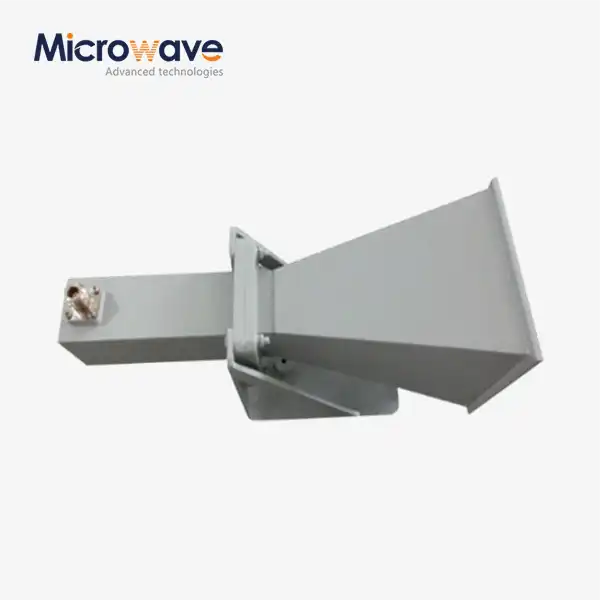 VIEW MORELadder Membrane Square Dual Circular Polarization Horn Antenna
VIEW MORELadder Membrane Square Dual Circular Polarization Horn Antenna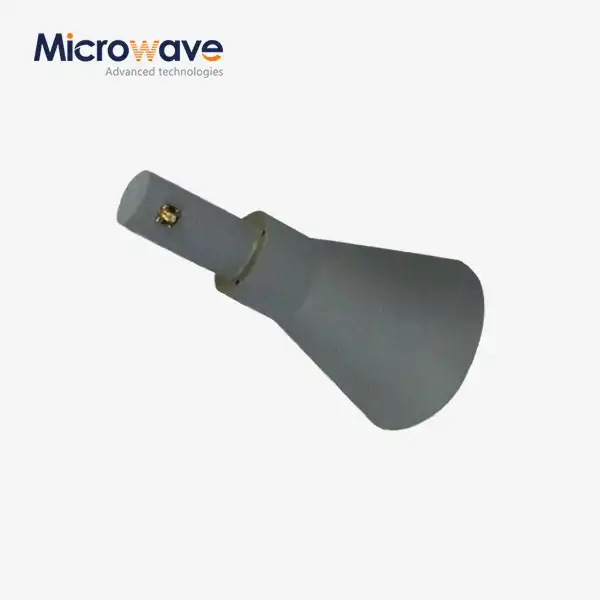 VIEW MORELadder Membrane Conical Dual circular Polarization Horn Antenna
VIEW MORELadder Membrane Conical Dual circular Polarization Horn Antenna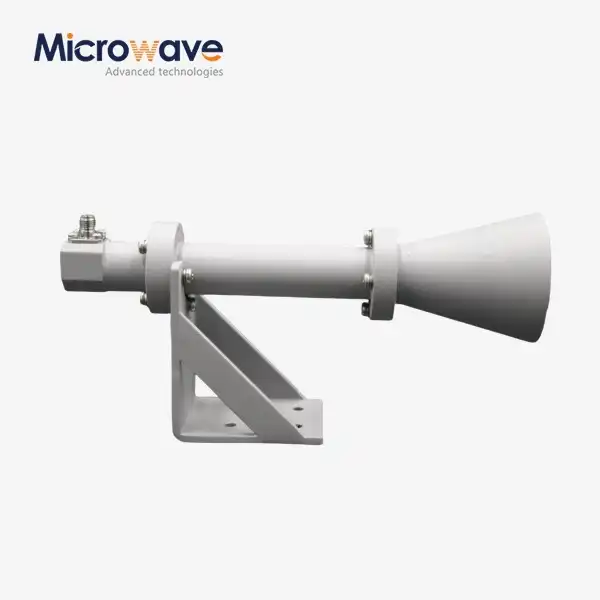 VIEW MOREDual Linear Broadband Circular Polarization Horn Antenna
VIEW MOREDual Linear Broadband Circular Polarization Horn Antenna




